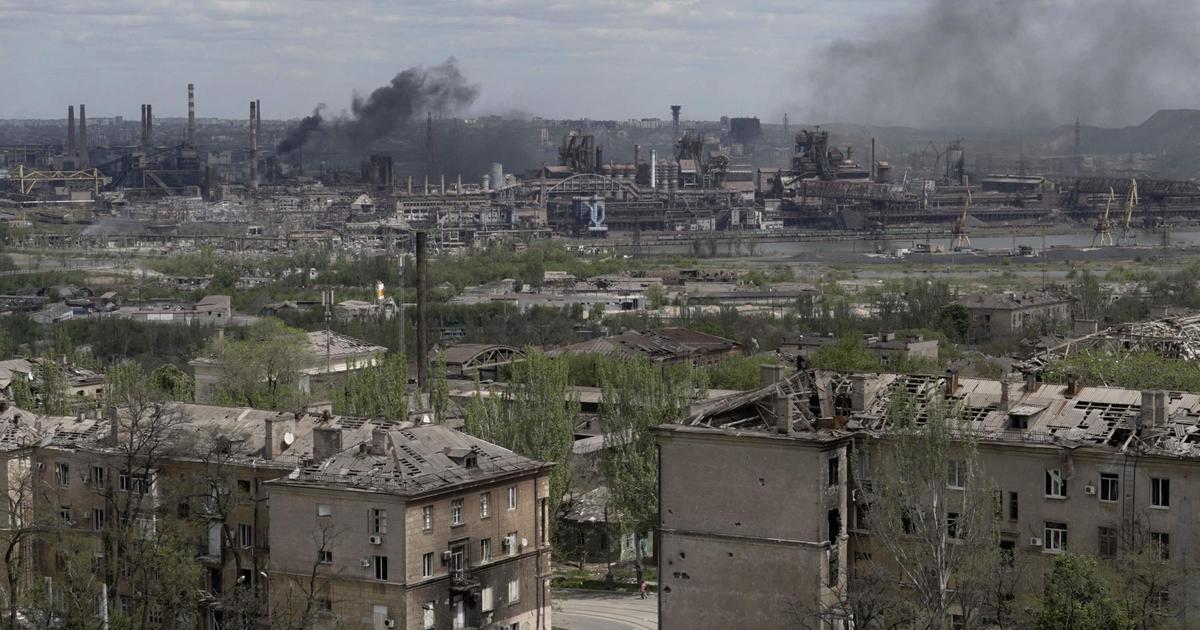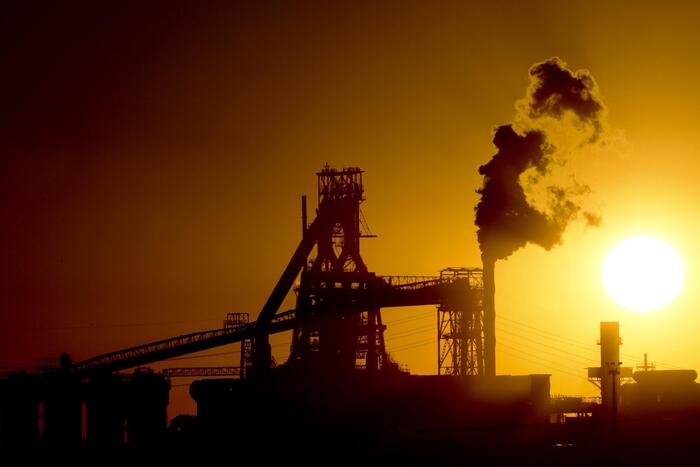Day by day, the Ukrainian resistance is losing control of the city of Mariupol as it succumbs to Russia's attacks.
For the Kremlin, the port city on the Sea of Azov is a bridge to connect the Crimea peninsula, which Russia annexed in 2014, and the regions of Donetsk and Luhansk in eastern Ukraine.
After a nearly two-month-long siege, the city – which had 430,000 inhabitants before the invasion – “no longer exists,” said Ukraine's foreign minister, Dmytro Kuleba.
Area under Russian control or Russian advance
disputed area
Mariupol
Azovstal
3km
March 24
.
After besieging the city for several days, Russian forces enter the city.
Ukraine also confirms for the first time that Kremlin's troops control part of the city center.
Mariupol
Azovstal
3km
March 30
.
The Russians settle in the center of the city and take control of a large part of the Azovstal steel plant.
Several battalions of Chechen soldiers take part in the operation, entering from the east.
Mariupol
Azovstal
3km
April 10
.
The Russians divide Mariupol in two and isolate the Ukrainian troops: some are pushed to one area close to the main port in the southeast of the city, while the rest are in the Azovstal steel plant.
Mariupol
Azovstal
3km
April 18
.
Russian troops close in on the steel works and attack it with heavy artillery, while the Ukrainian army attempts a counterattack.
If the Russians take control of Azovstal, they will control the entire city.
The city has been in a critical situation for weeks due to Russia's relentless attacks, and there has been no stop to the shelling.
The following map shows the infrastructure and buildings in Mariupol that have been hardest hit by Russia since the end of February, according to an analysis by Masae Analytics based on European satellite images.
The deeper the red on the map, the worse the destruction.
Damaged or destroyed buildings
Mariupol
Azovstal
steelworks
Sea of Azov
5km
Damaged infrastructure between February 20 and April 5, according to images from the Sentinel-1A satellite, analyzed by Masae Analytics.
Damaged or destroyed buildings
Mariupol
Azovstal
steelworks
Sea of Azov
5km
Damaged infrastructure between February 20 and April 5, according to images from the Sentinel-1A satellite, analyzed by Masae Analytics.
Damaged or destroyed buildings
Mariupol
Azovstal
steelworks
Sea of Azov
5km
Damaged infrastructure between February 20 and April 5, according to images from the Sentinel-1A satellite, analyzed by Masae Analytics.
Damaged or destroyed buildings
Mariupol
Azovstal
steelworks
Sea of Azov
5km
Damaged infrastructure between February 20 and April 5, according to images from the Sentinel-1A satellite, analyzed by Masae Analytics.
The damage can be identified by comparing images taken before the war (February 20) and more recently (April 5).
As Masae Analytics explains: “In the context of an armed conflict, these changes are very likely to indicate destruction.”
This analysis underscores the high level of destruction at the Azovstal iron and steelworks, which is one of the largest in Europe.
The plant is an industrial complex in the southeast of the city, near the port, which extends for 11 square kilometers.
It is made up of an intricate network of warehouses, rail tracks and underground tunnels, where Ukrainian troops and civilian defense teams are taking cover to survive the incessant bombings.
According to Ukrainian authorities, there are close to 1,000 civilians at the plant, including women and children.
“The Azovstal factory is an enormous space with so many buildings that the Russians … simply can't find [the Ukrainian forces],” Oleh Zhdanov, a military analyst based in Kyiv, told Reuters.
In the last few days, the plant has been the target of nonstop heavy artillery shelling.
Damaged or destroyed buildings
Mariupol
ENLARGEMENT
Azovstal
steelworks
Sea of Azov
500m
Azovstal
steelworks
Impact
of artillery strikes
The last Ukrainian soldiers and around 1,000 civilians are hidden in the tunnels and the network of bombed warehouses
Satellite image from Saturday, April 9, shows the impact of the artillery strikes against the Azovstal steel plant.
|
Maxar
Damaged or destroyed buildings
Mariupol
ENLARGEMENT
Azovstal
steelworks
Sea of Azov
500m
Damaged infrastructure between February 20 and April 5, according to images from the Sentinel-1A satellite analyzed by Masae Analytics.
Azovstal
steelworks
Impact
of artillery strikes
The last Ukrainian soldiers and around 1,000 civilians are hidden in the tunnels and the network of bombed warehouses
Satellite image from Saturday, April 9, shows the impact of the artillery strikes against the Azovstal steel plant.
|
Maxar
Damaged or destroyed buildings
Mariupol
Azovstal
steelworks
ENLARGEMENT
Sea of Azov
500m
Damaged infrastructure between February 20 and April 5, according to images from the Sentinel-1A satellite analyzed by Masae Analytics.
The last Ukrainian soldiers and around 1,000 civilians are hidden in the tunnels and the network of bombed warehouses
Azovstal
steelworks
Impact
of artillery strikes
Satellite image from Saturday, April 9, shows the impact of the artillery strikes against the Azovstal steel plant.
|
Maxar
Damaged or destroyed buildings
Mariupol
Azovstal
steelworks
ENLARGEMENT
Sea of Azov
500m
Damaged infrastructure between February 20 and April 5, according to images from the Sentinel-1A satellite
analyzed by Masae Analytics.
Azovstal
steelworks
The last Ukrainian soldiers and around 1,000 civilians are hidden in the tunnels and the network of bombed warehouses
Impact
of artillery strikes
Satellite image from Saturday, April 9, shows the impact of the artillery strikes against the Azovstal steel plant.
|
Maxar
This is not the first time that war has halted activity at the Azovstal steel plant.
The complex was built by the Soviet Union at the beginning of the 1930s, but it stopped operating during the Nazi occupation of the Second World War.
After the reconstruction, it was turned into a factory capable of producing more than six million tons of steel a year.
It is difficult to know how many Ukrainian soldiers are hiding in the tunnels.
Russia's attacks have broken down lines of communication with those outside of the city.
It is estimated that around 100,000 civilians remain in the entire city.
Leading international analysts of the conflict say it is just a matter of days before Azovstal falls, and with it, the city of Mariupol.
As Kuleba explained: “What remains of the Ukrainian troops and a large group of civilians are basically surrounded by Russian forces.
They will continue their fight, but it appears, based on how the Russians are behaving, that they have decided to raze the city to the ground at whatever cost.”




